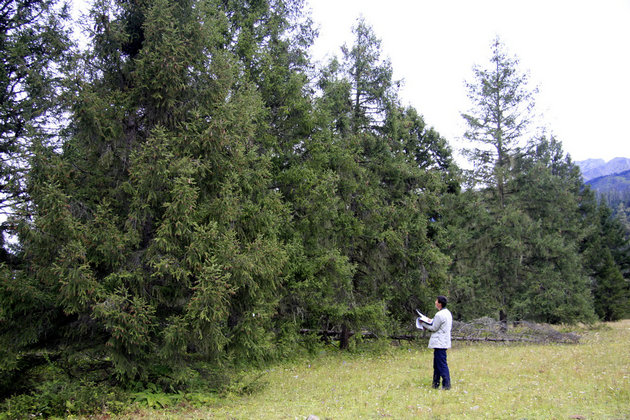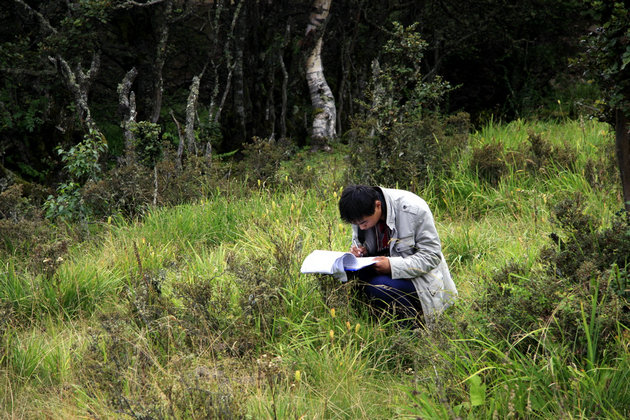Phenology refers to recurring plant and animal life cycle stages, which is considered as useful evidence to identify and understand climate and environmental trends. SETORS of ITP started to undertake plant phenological observations in 2009, and has improved and upgraded relevant observations since early 2010, focusing on fix-sited observations in nearby regions free of human disturbances.
ITP scientific staff at SETORS has selected some representative plant species for their regular phonological observation, such as Picea likiangensis var. linzhiensis, Quercus aquifolioides, Betula platyphylla, Sabina squamata, Salix paraplesia, Hippophae rhamnoides subsp. yunnanensis, Rosa macrophylla var. glandulifera, Rhododendron principes var. vellereum, R. nyingchiense, Plantago asiatica, Aster souliei, Halenia elliptica, Primula sikkimensis, Anemone rivularis. Exact trees and observation areas have been marked and plant leafing, sprouting, blooming, fruiting and defoliating have been recorded regularly.
 |
 |
| ITP staff at SETORS observes and records plant phenological features every day or every other day |
Unique in climate and geology, the Tibetan Plateau is extremely sensitive to global climate change, with its alpine plants responding significantly to climate and environment changes. The mastery of the growth and phonological features of these alpine plants will help reveal the interrelationship between climate change and phonological responses, as well as provide scientific basis for effective protection or reasonable use of natural resources.


